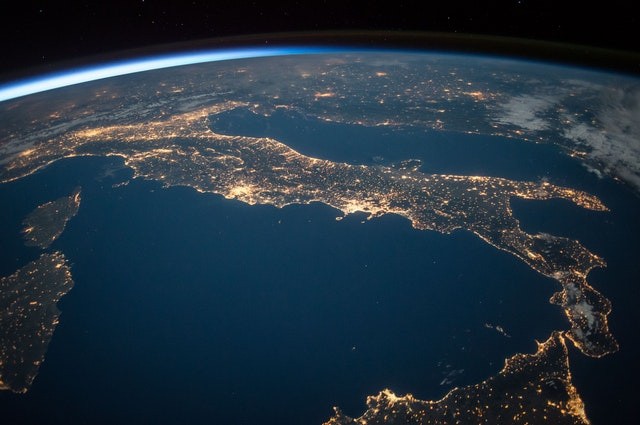Two massive blob-like formations exist within the Earth's mantle, roughly on opposing ends of the planet. Each of the blobs, technically known as Large Low-Shear-Velocity Provinces (LLSVPs), is the size of a continent and 100 times taller than Mt. Everest. One is located beneath the African continent, while the other is located beneath the Pacific Ocean.
Scientists have determined that these two blobs have complex patterns and structures using seismic wave sensors. Still, nothing is known about why the blobs exist or what caused their unusual formations despite their notable characteristics.

Discovering the Blobs
Qian Yuan and Mingming Li of Arizona State University's School of Earth and Space Exploration used geodynamic modeling and assessments of existing seismic investigations to understand more about these two blobs, according to SciTech Daily.
They were able to estimate the greatest heights that the blobs can reach via their research and how the volume and density of the blobs and the surrounding viscosity in the mantle may influence their size. Their findings were just published in the journal Nature Geoscience.
Their seismic investigation revealed that the blob beneath the African continent is roughly 621 miles (1,000 kilometers) higher than the blob beneath the Pacific Ocean.
According to Yuan and Li, the clearest explanation for the large height disparity between the two is that the blob beneath the African continent is less dense (and hence less stable) than the one beneath the Pacific Ocean.
Yuan and Li used hundreds of mantle convection model simulations to investigate. They thoroughly investigated the impacts of critical elements that may influence the blobs' height, such as the volume of the blobs and density and viscosity disparities between the blobs and their surroundings.
They discovered that the blob beneath the African continent must have a lower density than the blob beneath the Pacific Ocean to explain the enormous disparities in height between the two, implying that the two may have distinct composition and evolution.
Initial Volume
According to Live Science, the blobs' starting volume does not affect their height, according to Yuan. "The density of the blobs and the viscosity of the surrounding mantle are the main determinants of their height."
The Africa LLVP may have been rising in recent geological time, said co-author Li. "This might explain eastern Africa's rising surface topography and intensive volcanism."
These results might significantly impact how scientists understand deep mantle processes and how they affect the Earth's surface. The blob under the African continent, for example, may be unstable because of changes in topography, gravity, surface volcanism, and plate motion on the continent.
Seismic Analysis and Geodynamic Modeling
According to Yuan, the combination of seismic analysis and geodynamic modeling sheds fresh light on the nature of the Earth's greatest structures in the deep interior and their interactions with the surrounding mantle.
Scientists striving to understand the current state and development of the deep mantle structure and the nature of mantle convection would benefit greatly from this research.
Related Article : Evidence of Life Discovered Deep Beneath Earth's Mantle
For similar news, don't forget to follow Nature World News!
© 2025 NatureWorldNews.com All rights reserved. Do not reproduce without permission.





